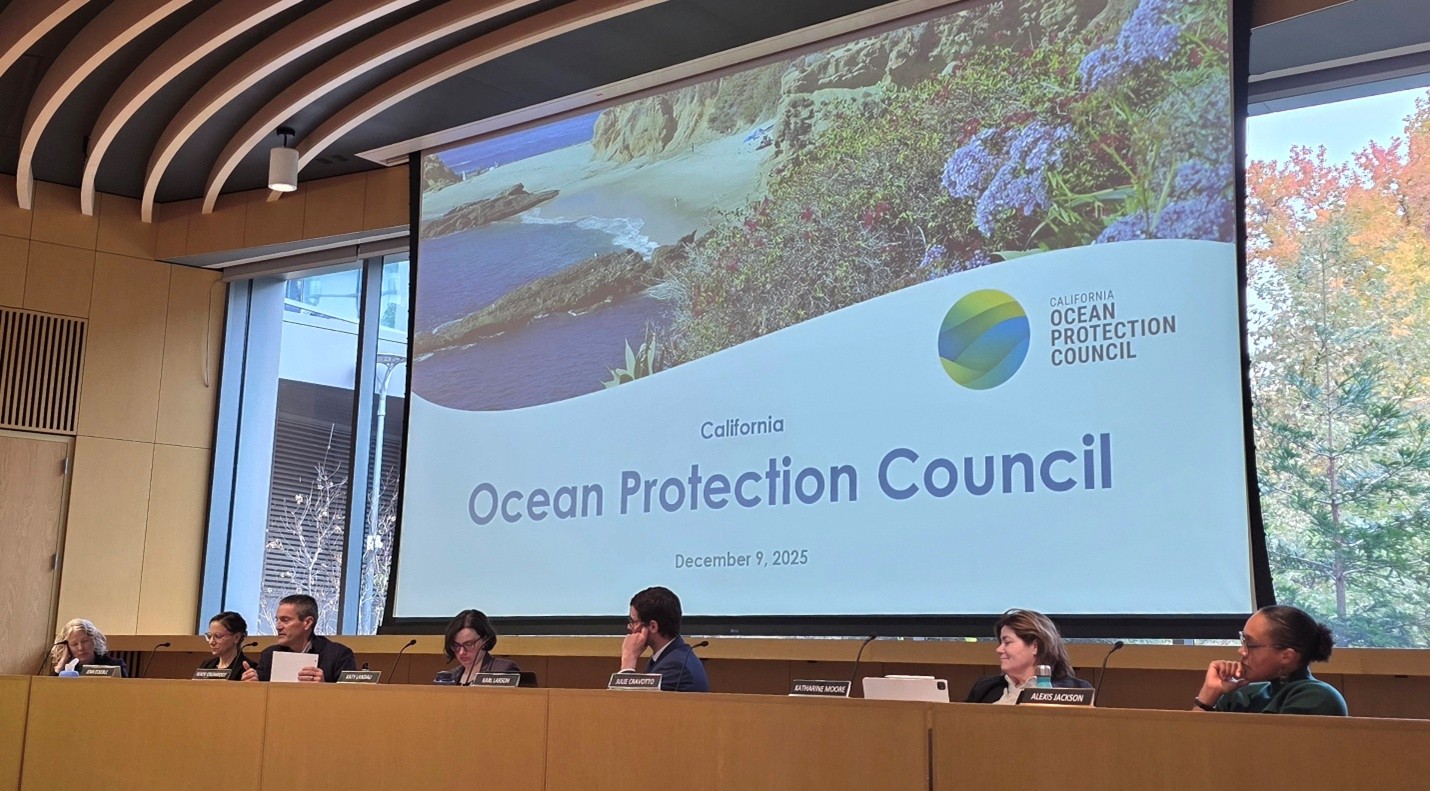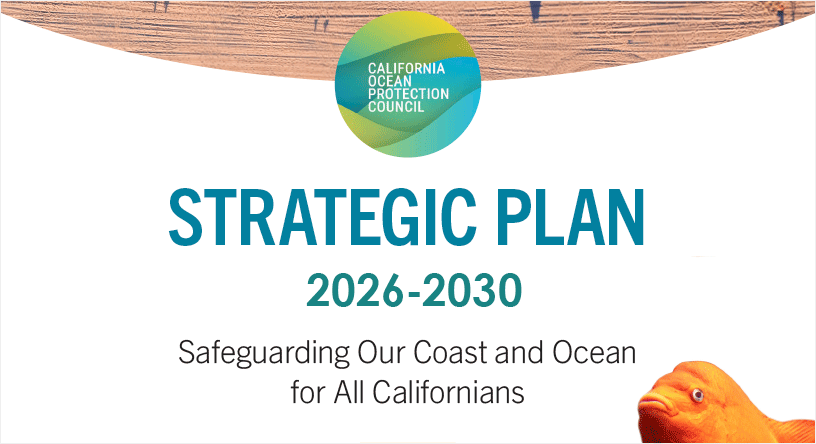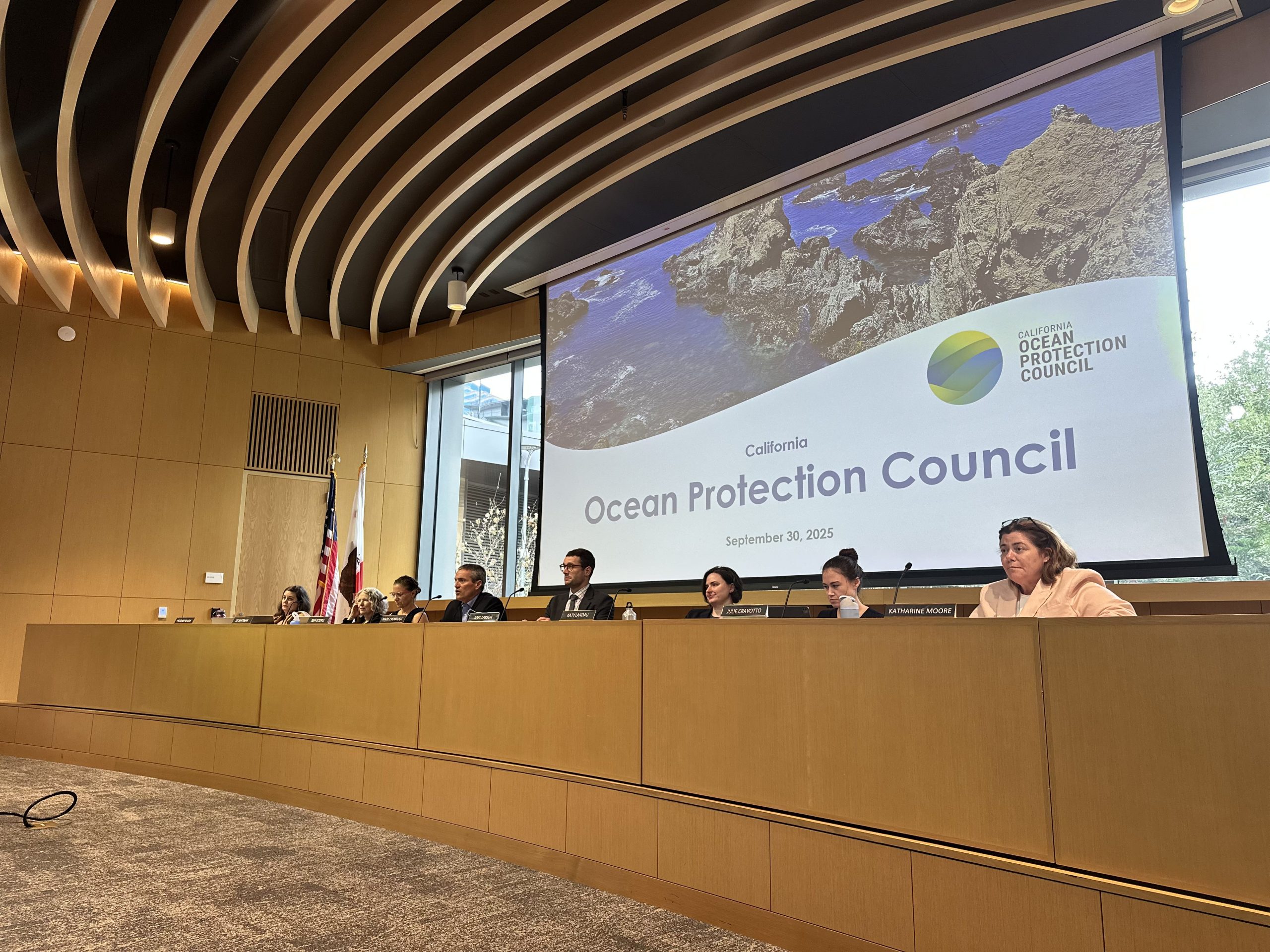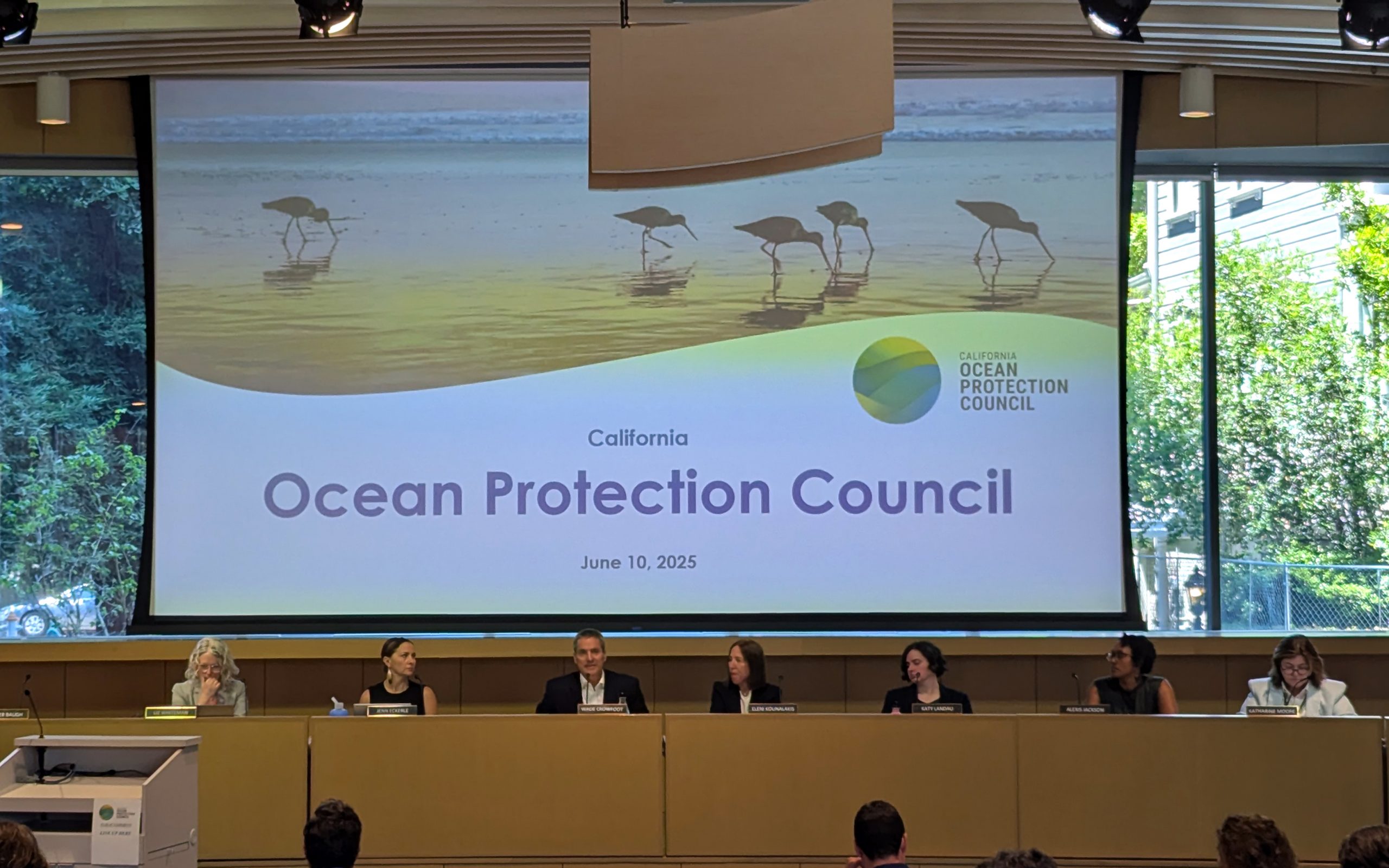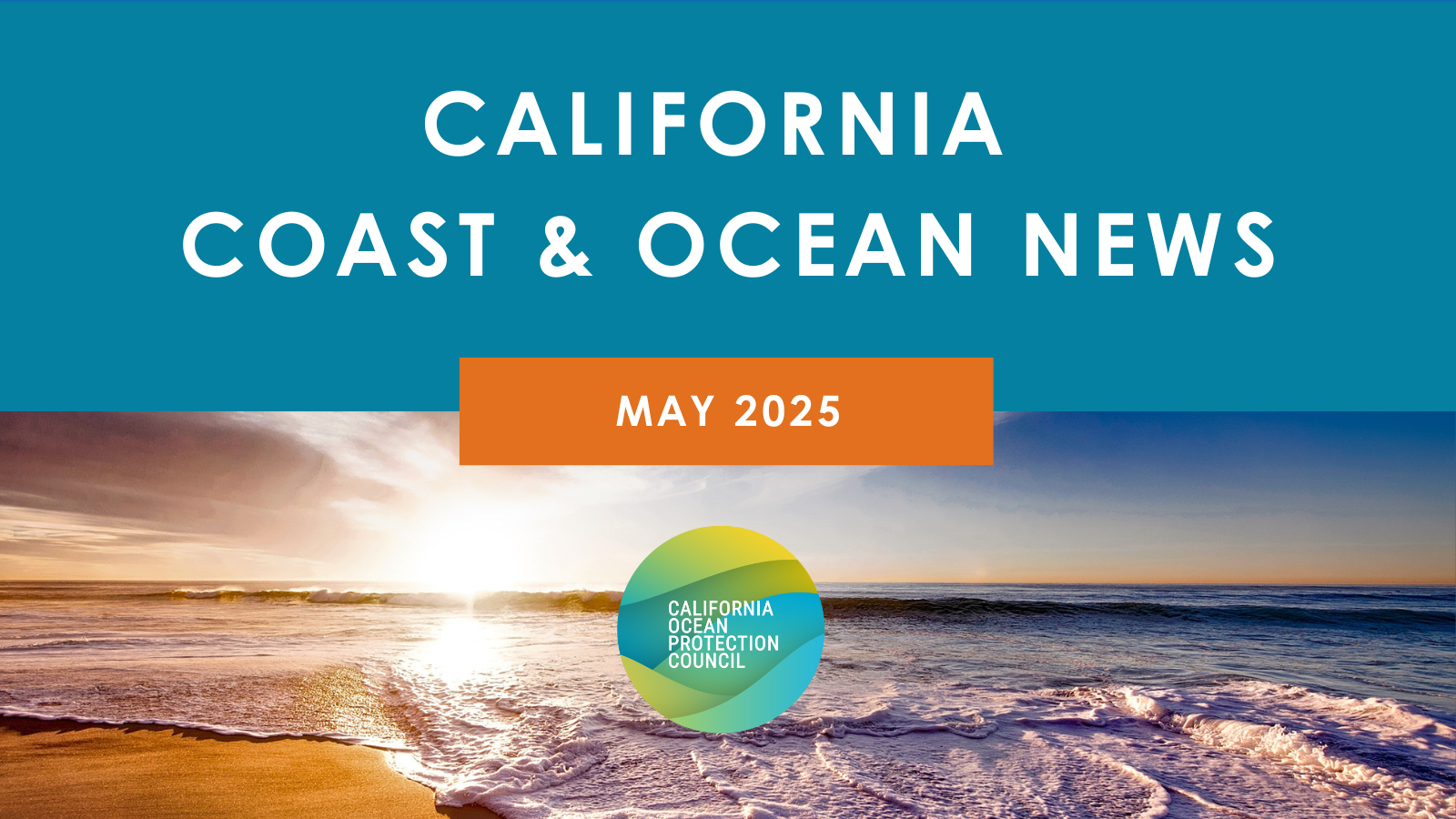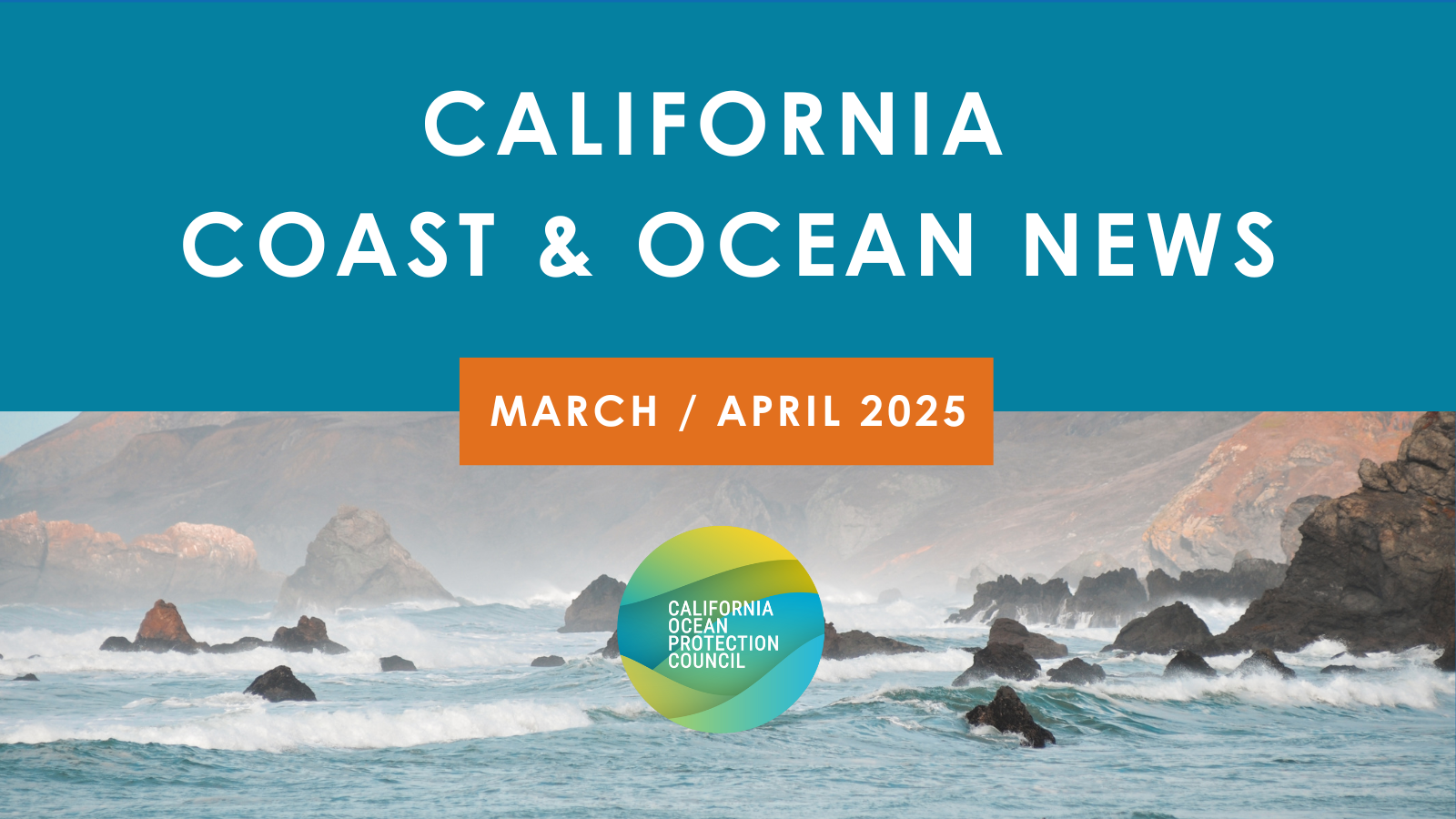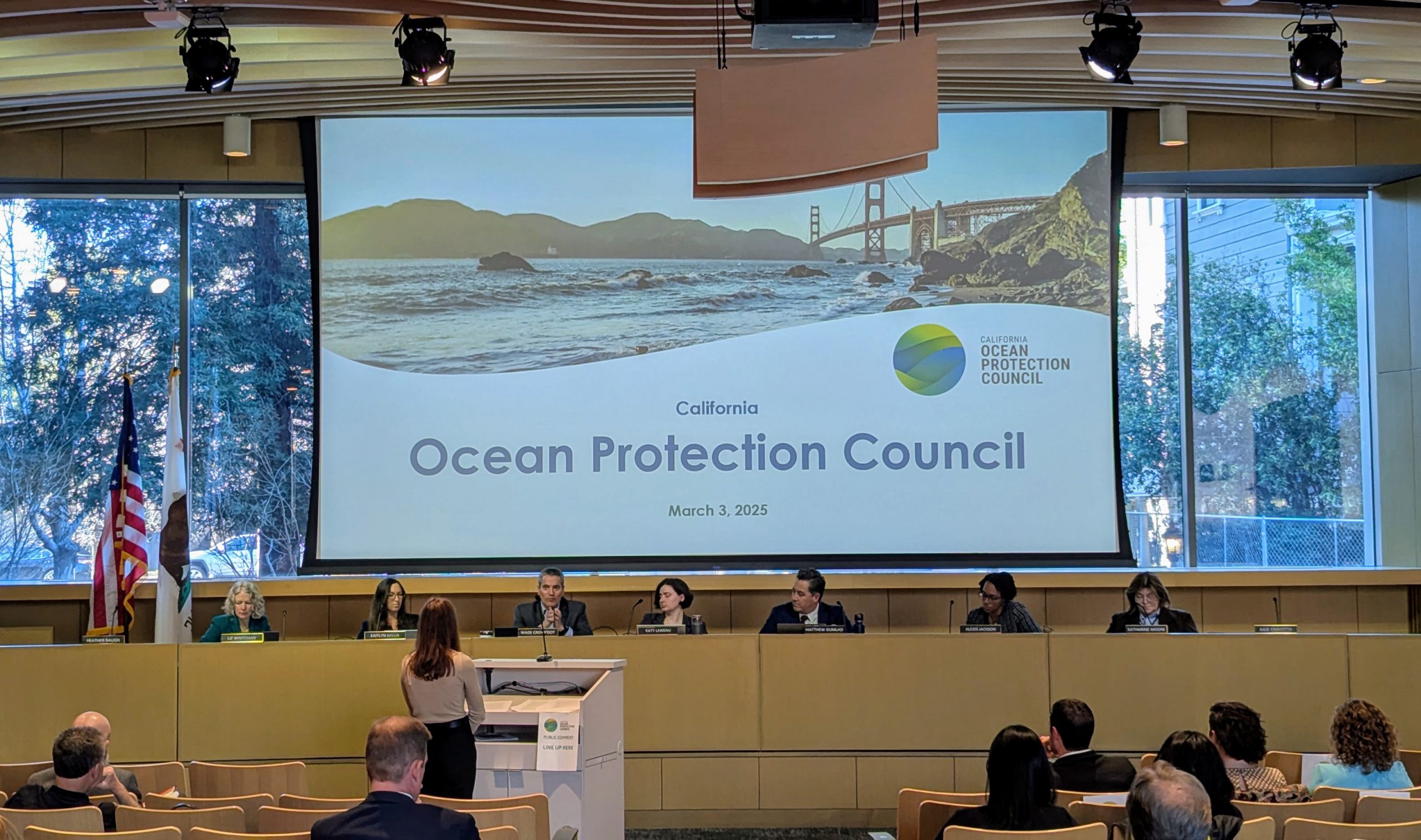Ocean Acidification and Hypoxia
Ocean acidification and hypoxia (OAH), two phenomena often coupled for a variety of biological and oceanographic reasons, have the potential for profound impacts on marine biodiversity. Ocean acidification is a global carbon dioxide (CO2) issue, but as we work to reduce global emissions and take action on climate change, we must also focus on reducing local stressors on ocean and coastal ecosystems. Local sources of carbon dioxide, such as runoff, can cause algal blooms that tend to increase CO2 in the water; combined with global climate change and ocean acidification, this can further degrade water quality and ocean health.
To better understand and combat ocean acidification, OPC is taking action in the state, across the West Coast region, and internationally, guided by Strategic Plan Goal 1: Safeguard Coastal and Marine Ecosystems and Communities in the Face of Climate Change and as directed by Assembly Bill 2139 (Williams) and Senate Bill 1363 (Monning). OPC’s Ocean Acidification and Hypoxia program works to protect ecosystems and coastal communities from changing ocean conditions by improving our understanding of OAH impacts on California’s ocean and coastal ecosystems, identifying opportunities for actions, and building sustained support to address this problem.
Read the Resolution of the California Ocean Protection Council on Ocean Acidification and Hypoxia (March 2025)
Nutrient Pollution
Nutrient pollution from agriculture, stormwater runoff and wastewater facilities can alter ocean chemistry, including reductions in pH (acidification) and dissolved oxygen (hypoxia), and cause algal blooms that degrade coastal water quality and ocean health. Combined with global climate change, California’s coast and ocean is increasingly vulnerable to ocean acidification and hypoxia that can impact the foundation of California’s marine food web. To better understand and combat ocean acidification, OPC is taking action in the state, across the region, and internationally.
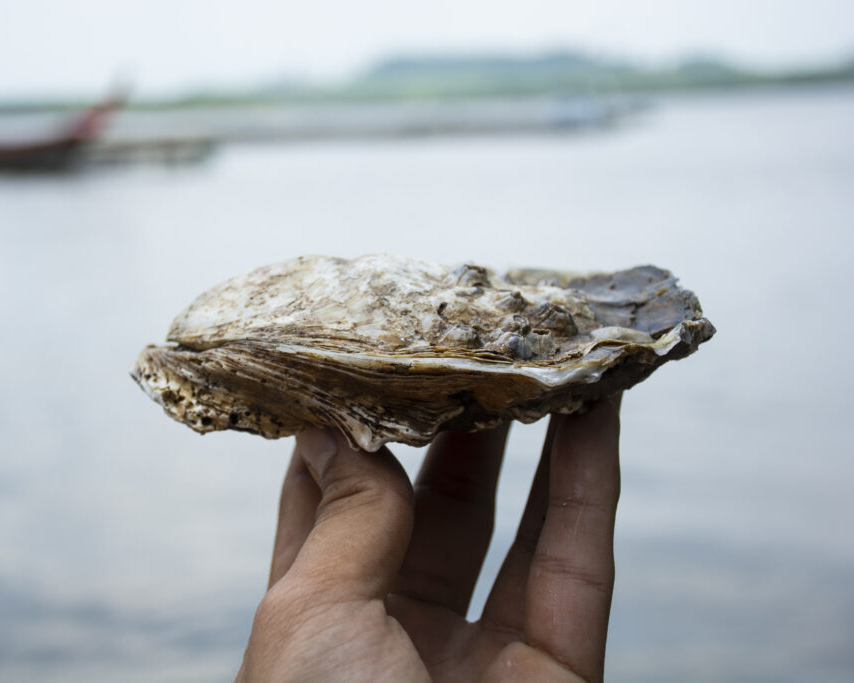
Oysters, like many marine organisms, are highly vulnerable to ocean acidification, which weakens their shells and threatens their survival in changing ocean conditions.
Our Work
Advancing Science and Informing Management
- West Coast OAH Science Panel – From 2013-2016, 20 leading experts developed a body of products that synthesized the state of knowledge and identified science-based options to address OAH at the regional and local levels. Panel reports include: Major Findings, Recommendations, and Actions (2016).
- California Ocean Acidification Science Task Force – The Task Force is an advisory committee of the Ocean Protection Council Science Advisory Team, and was established in response to Assembly Bill 2139 (Williams). Task Force reports include: Recommendations for Enhancing California’s OAH Monitoring Network (2020).
- California Ocean Acidification Action Plan (OPC and Ocean Science Trust, 2018) – 10-year roadmap for the State of California to take tractable and strategic actions and make targeted investments to reduce and prepare for the impacts of OA.
Monitoring
OPC works with scientists and monitoring practitioners to ensure California is comprehensively tracking changes in physical and chemical ocean conditions, as well as impacts to biological, economic, and cultural resources. OPC has worked with partners across the West Coast to build a comprehensive inventory of West Coast monitoring data to inform our understanding of long-term oceanic change and to assess the capacity of current monitoring infrastructure to meet management needs. See more on monitoring in Featured Projects below.
Featured Projects
- Enhancing California’s OAH monitoring network – In 2021, OPC funded three projects to improve OAH ocean observations off the California coast by expanding biological measurements into ongoing OAH monitoring programs and improving coordination and integration of biological and chemical measurements. This was identified as a key priority to enhance California’s OAH monitoring network in the 2020 OA Science Task Force Recommendations.
- Improving understanding of OAH vulnerability and impacts – In 2022 OPC funded four projects to advance OAH science and understand ecosystem impacts. The projects were competitively selected through a Prop 68 solicitation and are administered by California Sea Grant. The projects address recommendations from the OA Science Task Force, including: advancing OAH research to quantify exposure and assess impacts off the Northern California coast, assessing the potential for rockfish to adapt to OAH, and developing tools to understand the effects of OAH and ocean warming on Southern California marine species.
- Developing a California OAH portal – Also selected and funded through a Prop 68 solicitation in 2022, OPC funded the Central and Northern California Ocean Observing System to develop a centralized, user-friendly database of OAH data and synthesis products that provides status and trends information for the scientific and management communities. The portal integrates data from multiple sources and platforms to support the state and West coast region’s efforts to track and manage OAH.
- Assessing the impact of nutrients on ocean acidification and hypoxia – OPC funded the Southern California Coastal Water Research Project to conduct research and modeling on the impacts of nutrients from coastal pollution sources on OAH in the Southern California Bight (2013, 2020) and along the San Francisco and Monterey coasts (2024). This work utilizes a state-of-the-art scientific model, which has demonstrated that coastal nutrients, mainly from wastewater treatment plant effluent, has a significant impact on OAH in the Southern California Bight. The results from this research will advance understanding of nutrient effects on OAH and resulting biological impacts, as well as inform the state’s management of nutrient inputs and water quality.
Partners
OPC coordinates closely with partners at the local, regional, national and international level.
- Pacific Coast Collaborative (PCC) – Created by the Governors of California, Oregon, Washington, and the Premier of British Columbia in 2008, the PCC works to increase awareness, understanding, and action on ocean acidification and other climate-related changes in ocean conditions.
- International Alliance to Combat Ocean Acidification (OA Alliance) – The OA Alliance aims to advance scientific understanding of ocean acidification, take action to reduce causes of acidification, protect the environment and coastal communities from the impacts of a changing ocean, expand public awareness and understanding, and build sustained support for addressing this global problem.
- Interagency Working Group on Ocean Acidification – The Interagency Working Group on Ocean Acidification (IWG-OA) was chartered in 2009 by the Subcommittee on Ocean Science and Technology, as directed by the Federal Ocean Acidification Research and Monitoring Act of 2009 (FOARAM Act). Chaired by NOAA and Co-chaired by the National Science Foundation (NSF) and NASA, the IWG-OA has representation from 13 agencies and frequently engages with regional partners to promote informed investment in basic, multi-disciplinary, and applied ocean acidification research and long-term monitoring. The Pacific Coast Collaborative (PCC) and the Interagency Working Group on Ocean Acidification (IWG-OA) partnered to convene an Integrated Ocean Acidification and Hypoxia (OAH) Monitoring Task Force (Task Force), which staff from the Ocean Protection Council helped lead as representatives of California.
- Other partners: C-CAN, Global Ocean Acidification Observing Network (GOA-ON); West Coast Ocean Partnership; West Coast Ocean Data Portal; West Coast Regional Planning Body; California Ocean Science Trust; Southern California Coastal Ocean Observing System (SCCOOS); Central and Northern California Ocean Observing System (CenCOOS); Northwest Association of Networked Ocean Observing Systems (NaNOOS); Alaska Ocean Observing System (AOOS); IOOS Pacific Region Ocean Acidification (IPACOA); NOAA Ocean Acidification Program
Resources & Completed Work
- Resolution of the California Ocean Protection Council on Ocean Acidification and Hypoxia (March 2025)
- Impacts of Ocean Acidification on California Living Marine Resources (California Ocean Science Trust)
- Emerging Understanding of Seagrass and Kelp as an Ocean Acidification Management Tool in California (OPC Science Advisory Team working group and Ocean Science Trust, 2018)
- Seagrasses’ ability to ameliorate estuarine acidification (University of California, Davis)
- Potential seagrass buffering of Humboldt Bay to ocean acidification and implication for aquaculture industry and hatchery and eelgrass managers (Humboldt State University)
- Revision of Ocean Acidification and Hypoxia Water Quality Criteria (Southern California Coastal Water Research Project)
- Integrated modeling to answer key management questions regarding ocean acidification and hypoxia (University of California, Los Angeles)
- Inventory of ocean acidification and hypoxia hotspots (California Ocean Science Trust)
- MPA effectiveness and ecological responses in the face of changing ocean conditions (University of California, Santa Cruz)
Related Program Updates
Staff Contact

Kyla Kelly
Water Quality Program Manager
Kyla.Kelly@resources.ca.gov
< Back to Goal 1 Climate Change Home Page or Water Quality Home Page


